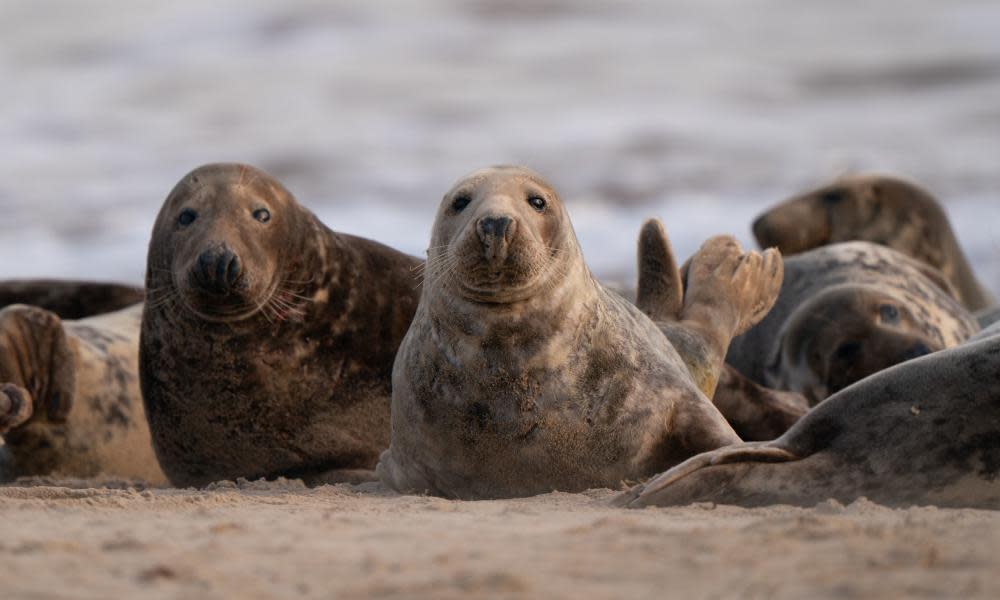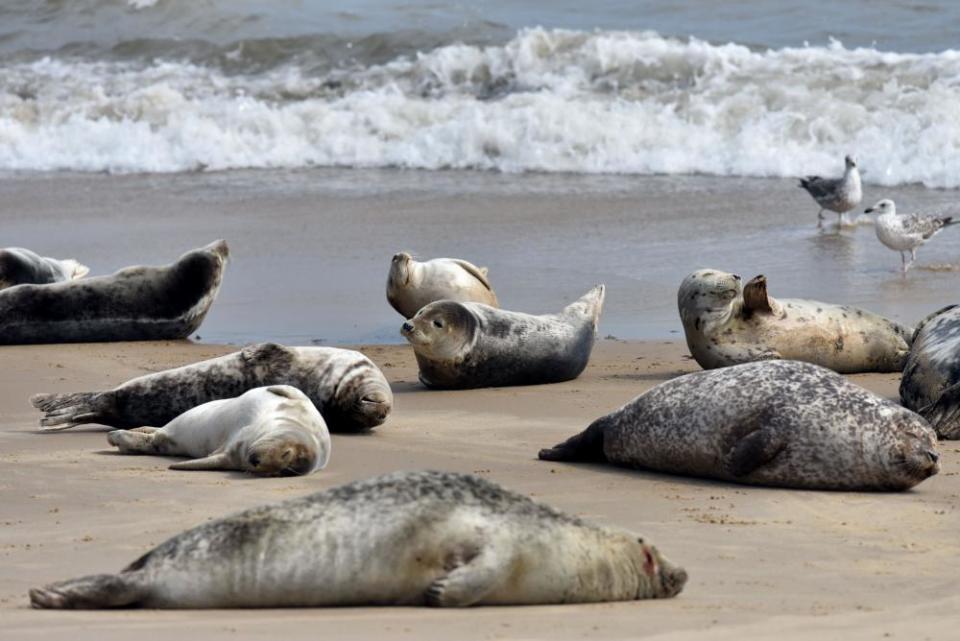‘We’ve had pups try to head to the pub’: grey seals make remarkable UK comeback

Grey seal numbers are booming in the UK. After nearly disappearing a century ago, they are now so abundant that in the past few weeks pups have been rescued from outside kebab shops, fish and chip restaurants and farmers’ fields.
It is a remarkable conservation success story, say environmentalists. Numbers dropped as low as 500 in the early 20th century due to hunting, as seals were often treated as pests in fishing communities. Today, about 120,000 grey seals make the UK their home, representing about 40% of the global population. They have become more common than the UK’s other main seal species, the common seal, sometimes known as the harbour seal.
Apart from the odd killer whale, the lack of predators and rich fishing waters make the British Isles the perfect habitat for the large marine mammals.
Grey seals, which live 30-40 years, can be spotted all year round, but every winter, during the breeding season, tourists flock to beaches to watch them with their pups, which lie on the sand waiting for their food to digest between fishing trips. The fluffy pups stick around as they fatten up, until their white coat is gone and they can brave the North Sea and Atlantic Ocean on their own. Most have already left their colonies this season.
Peter Ansell, the chair of Friends of Horsey Seals on the Norfolk coast, has had a front-row seat to the comeback of the grey seal. The former lorry park manager has helped look after a colony on a five-mile stretch between Waxham and Winterton for the past 18 years. This year was a bumper breeding season – nearly 4,000 pups arrived, almost double the number of the winter of 2019-2020, the last time they were counted.
“When I first started, there were less than 100 pups born. It’s been rising steadily. There’s been more and more. When we got to 1,000, we thought, ‘bloody hell!’ … now we’re getting a bit blase,” he says.
Ansell and his fellow volunteers make sure the public keep their distance from the seals during the pupping season and operate an emergency line for when young seals get into trouble.

“The pups do tend to wander a long way,” he says, recalling the rescue of a seal from outside a fish and chip shop this month, around the time another was spotted outside a nearby kebab shop on the Norfolk coast.
“It just shows what a varied diet they have! Some of them are nice big fat ones that weigh up to 45kg. It’s a long walk with them if you’ve got to stretcher them to the car. One lady found a pup in her back garden. When we got there, it was behind the side gate. He was a big one, too. They really get in a surprising number of places,” he says.
Lara Howe, a marine officer with the Manx Wildlife Trust on the Isle of Man, says seals “hauling out” in new places as their number grows is being widely celebrated by the public.
“They’re very charismatic animals. People really have a strong affection for them. We see that all the time: people calling us up and reporting them on the beach. People love to watch them. I think it’s one of those things you remember from being a child. We’ve even got some fishermen who feed the friendly ones in the harbour,” she says.

Related: Top-flight recovery: the inspiring comeback of the California condor
“We’ve had pups go up the slipway on the beach and try to head to the pub. Ours like to try to go for a pint!” says Howe.
Georgia de Jong Cleyndert, head of marine with the Cumbria Wildlife Trust, says the removal of human hunting pressures was a key reason for the comeback, as the mammals have been formally protected by UK law since 1970.
“We have removed that hunting pressure and they have bounced back,” she says. “Further research is needed but we think the seals might be using the artificial reefs on the windfarms to forage.
“There’s been a huge increase in the population. A couple of years ago, we recorded 518 seals hauled out and the area has become an established breeding colony. It’s a real success story.”

Find more age of extinction coverage here, and follow biodiversity reporters Phoebe Weston and Patrick Greenfield on Twitter for all the latest news and features

 Yahoo Movies
Yahoo Movies 
